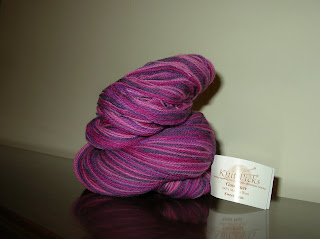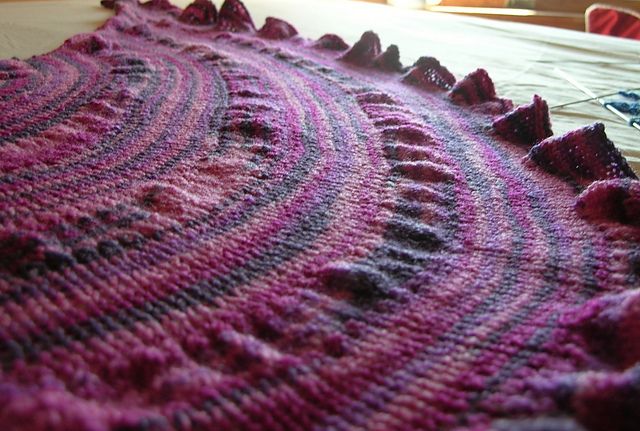
 We all know we're supposed to knit a swatch (and wash it) before starting a project, especially big ones. Whether we do or do not actually follow this protocol is another matter. Shown here is a swatch of alpaca in the lace style before and after washing. It was not stretched or blocked, just washed and laid out flat to dry. This was my test for the Memories of Ukraine tunic sweater found in The Natural Knitter (good book, by the way, excellent photography). Notice the difference in the fabric. I'll admit, I don't always swatch when working with a bounce-tastic wool, but with alpaca it is a must.
We all know we're supposed to knit a swatch (and wash it) before starting a project, especially big ones. Whether we do or do not actually follow this protocol is another matter. Shown here is a swatch of alpaca in the lace style before and after washing. It was not stretched or blocked, just washed and laid out flat to dry. This was my test for the Memories of Ukraine tunic sweater found in The Natural Knitter (good book, by the way, excellent photography). Notice the difference in the fabric. I'll admit, I don't always swatch when working with a bounce-tastic wool, but with alpaca it is a must.But once you're done with a project and you no longer need the reference or extra yarn, what do you do with that swatch? More solid swatches are often used as coasters in our house. You could also turn them into squishy blocks for toddlers, or felt them and sew a bunch together for a bag or trivet, or sew up a single felted swatch with some stuffing and catnip for your felines.
 Or you could just make a sweet pink-cape-of-doom for your freezer bat.
Or you could just make a sweet pink-cape-of-doom for your freezer bat.








